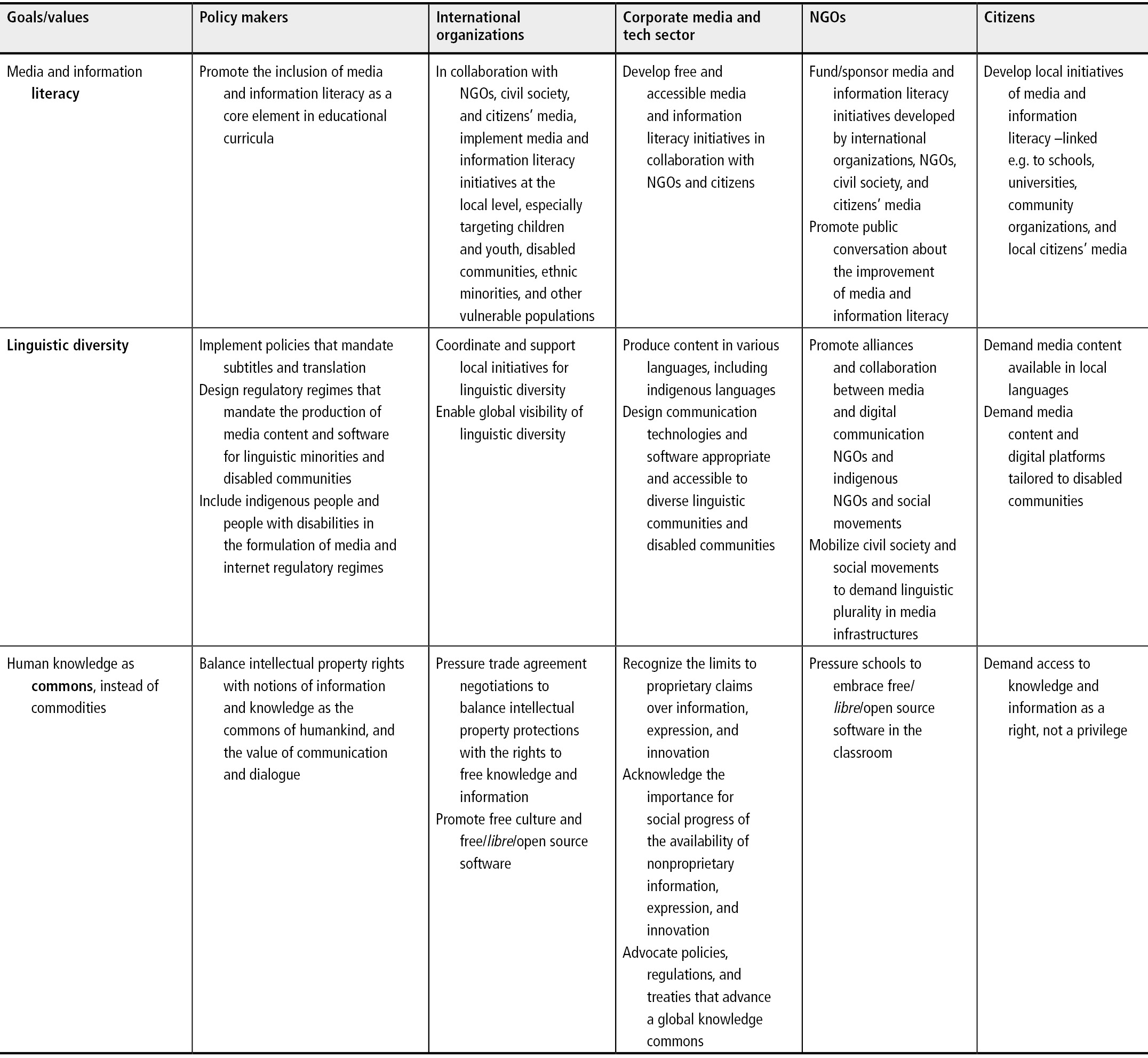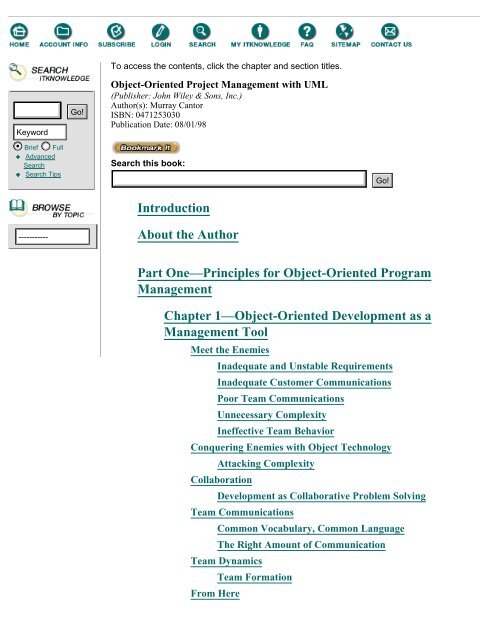| Stand Alone Frequency Generator: Unlike some generators on the market, this generator is designed to be a simple, easy to operate, stand alone frequency generator requiring no complicated computer interface to use all of its features. Computer operated generators can generally work well if power output is adequate, but many people do not feel comfortable having to use a computer to operate all of a frequency generator's options. Our customers appreciate that they are not required to have a computer to operate any of our instrument's capabilities. | |
| Frequency range: 1 to 20 million Hertz. | |
| Power output: Variable up to 5.4 watts peak power. (2.7 watts RMS) | |
| Optional Amplifier: Variable up to 30 watts peak power. (15 watts RMS) | |
| Time Saving Feature: Simultaneously Runs 8 audio frequencies(1-40,000Hz), and Simultaneously Runs 2 frequencies from 40,000-20,000,000 Hz. (HUGE TIMER SAVER) | |
| Carrier Wave: 3.1 MHz RF (Radio Frequency) for more power, and capable of producing harmonic sidebands like Rife's original 1930's, 1940's and 1950's equipment! This is IMPORTANT! (NOTE: Carrier wave can be turned off so the user can operate it as a standard audio frequency generator.) | |
| 873 Preset Channels. Comprehensive and easy-to-run presets allow you to start experimenting immediately. | |
| Channel capability, 48: run up 48 frequencies in sequence, or in 6 groups capable of holding 8 frequencies each. | |
| Programmable channels: 2000. 873 presets leaves you with 1127 Open Channels. You can use these to make your own 'Custom Channels' that will 'remember' the frequencies you load into it. | |
| Outputs: Four. 2 positive (red) and 2 negative (black). Using 4 points of contact (hands and feet) allows more signal to permeate the body. | |
| Voltage output in Audio Mode: 36 volts peak to peak. | |
| Voltage output in RF mode: Over 100 volts peak to peak making it over 27 times more powerful than most standard frequency generators. | |
| Frequency output: Digitally accurate frequencies (converted to analog using a DAC. | |
| Resolution: 1/100th of a Hertz: (2000.76) Beyond this is basically pointless. | |
| Two circuits. 'Audio Mode' circuit capable of outputting 8 frequencies simultaneously from 1 to 40,000 Hertz, and 1 frequency up to 400,000 Hertz. This circuit uses NO RF carrier frequency. Running it like this is how MOST contact instruments on the market operate. | |
| Two circuits. 'RF Mode' circuit capable of outputing 8 frequencies simultaneously from 1 to 40,000 Hertz and two frequencies from 1 to 20 million Hertz. For best results, leave it in this mode. | |
| Waveforms: Square and Sine wave. Square wave up to 150,000 Hertz. Sine to 20,000,000 Hertz | |
| RF sideband circuit superior to super-regeneration or phaser circuit capabilities. | |
| Duty cycle capability: 10% to 100% square wave duty cycle. | |
| Gating (or pulsing) range: 1 - 5000 Hertz (advanced feature.... you don't have to use this) | |
| Gating duty cycle range: 10% - 90%. 'Save Gating' Feature: Allows you to save, in any channel, gating turned ON whenever that channel is used. | |
| Sweep Feature: Run 1 frequency at a time, from 1 to 20 million Hertz. (A Sweep runs ALL frequencies between 2 chosen points. Ex:10,000-20,000) | |
| Converge sweeps: Run 2 frequencies at a time, from 1 Hertz to 20 million Hertz. | |
| Channel sweep: Variable, 2 Hertz - 20,000 Hertz. The feature allows you to 'hover' above and below your target frequencies. This helps to prevent the organisms from adapting. (Ex. A 1000 Hz Channel Sweep on a frequency of 10,000 would sweep from 9,500Hz to 10,500Hz) | |
| Display: LCD. | |
| L.E.D: RF indicator light confirms RF output. | |
| Computer software: The easy-to-use software for programming frequencies into the generator is an option, not a necessity. It is mostly used for programming your own custom channels with frequencies of your choosing, and/or restoring any lost programmed channels that may be accidentally deleted. | |
| Worldwide AC Adapters: Two switching 110/240 volt power supplies for worldwide use. | |
| DVD Training Guide and Paper Operations Manual. | |
| Free lifetime phone support. | |
| Free software updates (when rare updates occur.) | |
| 60 Day Money Back Guarantee (less shipping cost) if returned in new condition. | |
| Two Year Warrantyon parts and labor. (as of 1/1/16) | |
| Broadcast Capable w/Optional Master Amplifier & Plasma Tube | |
| A M.O.P.A. (Master Oscillator Power Amplifier) is needed to use the gas filled tube radiant method of outputting frequencies. Many people ask what are the benefits of this method? First: it uses the gas filled tube method, which allows for a greater power output of 207 watts peak power (103 RMS). Second: the M.O.P.A., for the first time since the 1930's, allows for the use of high frequencies directly output through the gas filled tube. This has been a long sought after feature that many have been asking for. If you are wanting to use the more powerful, versatile 1930's/1950's radiant method, then the M.O.P.A. amplifier is the instrument you will want to own. Third, this broadcast method allows for hands-free operation. The frequency generator combined with this master amplifier has the ability to run from 1 to 8 frequencies up to 40,000 hertz through a gas filled tube. No other instrument has this capability. (Rife ran up to 10 at a time.) | |
| Hands free Operation / Run it While You Sleep Useful range is about 20 feet when using gas tube. Due to the laws of physics there are limitations to gas filled tubes and metal antennas that need to be understood. Both are very efficient and about 100% of the energy that you put into them comes out. But for every foot that you move away from these antennas you lose 75% of the power they output. Example: With a 207 watt output, at one foot away from the gas filled tube you will only get 51.75 watts. At two feet away you only have 12.93 watts, and at 3 feet you only have 3.23 watts. Because of the laws of physics it is important to be as close to the gas filled tube as you can get if you want the greatest amount of the energy that comes out of it. One to six feet distance away from the gas tube would be the best choice. Always the closer the better. Suggested range: 1 inch to 6 feet when using gas tube. Because there is no 1 foot to 3 foot null zone (non-effective range) it is not necessary to stay 3 to 6 feet away from the gas tube because it outputs the same as the 1930's/1950's equipment that was used within 6 inches of the target area. | |
Power and Running Multiple frequencies
Back in the 1950's they built a ray tube instrument that would run 10 frequencies simultaneously. So running multiple frequencies is not a new concept. Yet today there are some unknowledgeable people who want to disparage running multiple frequencies. Successfully running multiple frequencies is directly tied to power. If you have enough power then it is possible to do this. Below we have given answers to the most commonly asked questions.
Does running multiple frequencies reduce the power level of the frequencies?
- Rife generator free download - Rife Generator, Rife Life, Free Barcode Generator, and many more programs. Serial Key Generator. Create serial keys for your C#.NET, VB.NET, C Builder, Delphi.
- Download myslideshow 2.3.4 serial here. More than 400K cracks, keygens and patches are presented in our data base.
Locate and download QuizPro v.3.4.4 key generator from our site. Thousands of cracks, keygens and patches are presented in our storage.
The answer to that question would be yes. This is why this generator was built with the ability to output 5.4 watts peak power at 100% duty cycle using an RF (Radio Frequency) carrier frequency. Using an RF carrier frequency is the only way the power level could be increased. The original 1950’s equipment did not use an RF carrier frequency so they could only output one audio frequency at a time with only 1/5th of one watt of power (0.20 of one watt). This power level worked well with only one audio frequency. In order to overcome this limitation our 20Mhz generator uses two separate circuits.
The Audio Mode circuit has no RF carrier frequency and 0.75 watts power output. It is used for frequencies from 1 Hertz to 400,000 Hertz. Frequencies used with this Audio Mode circuit can be physically felt from 1 to about 20,000 Hertz.
The RF Mode circuit is used for frequencies from 1 Hertz to 20 million Hertz. The 3.1 MHz carrier frequency can also be used with this circuit. When using the RF carrier, audio frequencies can not be felt. Using this method it is possible to use 5.4 watts peak power and makes it possible to run up to 8 frequencies simultaneously.
Logically if you use 2 audio frequencies using this RF circuit you would want to double that power level (2 X 0.20 = 0.40% of one watt) to 0.40% of one watt. If you run up to 8 audio frequencies you would want at least 8 times that power level or 1.60 watts peak power. This is why the GB-4000 has 5.4 watts of peak power output so that it has over 3 times the power capability needed for running 8 audio frequencies simultaneously at the original 1950’s capability of 0.20 watts of power for one audio frequency.
Some people also ask if they can only run multiple frequencies. The answer to that question is no. The GB-4000 gives you the flexibility to switch from running one audio frequency at a time to being able to run up to 8 audio frequencies at a time. You can choose how you want to run the frequencies.
Many people want even more power than the GB-4000 power levels per audio frequency. If you want more power then you can purchase the SR-4 15 watts RMS or 30 watts peak power amplifier and you will have 3.75 watts of peak power for each frequency, if you run 8 audio frequencies simultaneously. If you decide to only run 4 audio frequencies simultaneously then you would have 7.5 watts of power for each frequency. And if you only run one frequency you can have up to 30 watts of peak power for a single audio frequency.
If you want even more power than 30 watts peak power then you can purchase the M.O.P.A. gas tube amplifier which is a 207 watts maximum peak power instrument. With this instrument you could run up to 8 audio frequencies simultaneously with up to 25 watts of power for each audio frequency.
We look at it as going from good to better to best.
What separates our frequency generator from others available today?
First, the time saving feature. While almost all manufacturers only run one frequency at a time, this generator can run from 1 to 8 frequencies simultaneously for a superior multi-frequency waveform. The benefit of running frequencies simultaneously is a time saving feature. If you run 8 frequencies one at a time it would take 40 minutes to run them all but if you run them simultaneously then it would only take 5 minutes to run all 8 frequencies.
This generator can output up to 8 frequencies simultaneously up to 40,000 Hertz (Audio Mode only), and 2 frequencies up to 20,000,000 Hertz (RF Mode). Each frequency is generated and output in a pure waveform. With its 20 MHz (20 million Hertz) frequency range it has the ability to generate millions of individual frequencies in pure waveforms which can be put into individual channels and run as sequences of individual or multiple frequencies.
Some manufacturers claim that running multiple frequencies simultaneously causes the purity of each individual waveform to be lost as well as creating the possibility of canceling out or creating other frequencies.
Very rarely are other frequencies created, and when they are, they are generally beat frequencies which are considered beneficial. Those who run multiple frequencies simultaneously are seeking the benefits of SAVING TIME.
Even though frequencies combined together may seem to lose their individual clarity, all the components of each frequency are present. Think of an orchestra playing many different instruments. Though they combine together to make beautiful music, each instrument’s full sound components are still present and nothing is lost.
In order for a frequency to be canceled out, the same frequency must be introduced 180 degrees out of phase.Since this generator does not output the same frequency 180 degrees out of phase the canceling of a frequency is not possible.
Second, the use of the 3.1 Mhz carrier wave frequency provides much more penetration through tissue and cells, while at the same time generates 1000's of sidebands harmonics. This is DESIRED effect. By Rife's and Hoyland's own admission, they weren't positive whether is was the base frequency being run, or possibly one of the sideband frequencies was doing the trick. It is generally best to use the carrier. However you can turn it off with the press of a button if you want to try it both ways.
Why Power Output Is Important In A Frequency Generator?
When comparing the various instruments, power output is a very important consideration. This is the reason this generator uses a carrier frequency so that more power can be output. The power output of most frequency generators on the market today that do not use an RF carrier frequency is only about 0.20 of a watt. With the use of an RF carrier, 5.4 watts peak power (2.7 RMS) and is over 27 times more powerful than these instruments. With the use of the optional 30 watt Amplifier (15 watts RMS), it is 150 times more powerful.

Common Questions (see the FAQs for more details)

Audio Frequencies vs. Radio Frequencies - What is the difference?
In a nutshell, Radio Frequencies (RFs) are higher than Audio Frequencies. The science seems to say more power and more cycles per second (higher frequency) allow the signal to penetrate more deeply. The first known frequencies from the 20's and 30's were in the millions of hertz range. (like our generator)
So why do most of the instruments built today only use low audio frequencies, when original frequencies were much higher? The FCC (Federal Communication Commission) is the main reason why. In 1935 Congress created the FCC and by 1936 they began to regulate the airwaves. Before 1935 there were no regulations to prevent Dr. Rife from using his high frequencies output through a plasma powered ray tube. The frequencies output through the ray tube would travel about 12 miles in each direction from his laboratory, and would. Dr. Rife said his equipment would “raise the devil” with all the radios.
In 1936, Philip Hoyland built the first audio frequency instrument. (right) In these early designs, a radio frequency was used to 'carry' a newer set of lower audio frequencies into the body. (like our generator does)
Rife Generator 3.4 Serial Key Serial
In the 1950s, Rife's research partners John Crane and John Marsh continued to build this lower audio frequency instrument, using simple off-the-shelf technology of the day. From this time on, Dr. Rife’s original high frequencies were no longer used in any of the equipment, nor were his RF carrier waves used. Most of today’s modern frequency generators are patterned after these early 50's style instruments.
Without the RF carrier frequency, they couldn’t get the same harmonics and penetration as the earlier ray tube instruments. This is why our frequency generator does use a RF carrier wave. A very simplified way to think of this is this: when you hear a song on the radio, it is audio frequencies that you are hearing. However, these audio frequencies are brought to your radio antenna by a modulated radio frequency, or 'carrier wave'. The audio frequencies are 'piggy backed' onto the radio frequencies. This 'RF' carrier signal simply delivers the lower audio signal deeper. (which is what you want)
Square Wave vs. Sine Wave
Download Serial Key Generator
Another debate within this field is 'which wave format to use?' Before the newer instruments were developed, all the generators output only radio frequencies, or 'RF'. When emitting these radio frequencies, the sine wave format is produced. Basically because this higher frequency range (in the millions of pulses per second, or hertz), creates a wave form that is naturally rounded at the top and bottom. It's more difficult to create very sharp signals at this high rate of oscillation.
With advent of the newer Crane/Marsh design, the rate at which these signals are emitted dropped substantially into what is referred to as the Audio Frequency range. (this was not a desired design aspect at the time.) With these lower frequencies, the signal can be very sharply turned on and off, as seen below. This square wave design is used when running the lower audio frequencies. One important reason is because it helps to better create entrainment between the signal being emitted and the target. The principle of entrainment is at the very foundation of this entire science.

Entrainment is defined as the 'tendency for two oscillating bodies to lock into phase so that they vibrate in harmony.' It is also defined as 'a synchronization of two or more rhythmic cycles'. The principle of entrainment is universal, appearing in chemistry, pharmacology, biology, medicine, psychology, sociology, astronomy, architecture and more. |
In the Radio Frequency range, a sine wave pattern is desired &generated. (above 40,000htz) | In the lower Audio range, a square wave pattern is desired and generated. (below 40,000htz) |
Sample Sine Wave | Sample Square Wave |
Signal gently rises and falls. Can vary the rate of this rise and fall, top and bottom limits, etc... | Signal sharply turns on and off. Can vary the rate of this 'on/off' signal. (Note:our device now can produce square waves to 400,000 Hz) |

Analog vs. Digital
Serial Key Generator Online
The question always arises about the type of signal that should be used. It is generally accepted that the most effective of these frequency generating devices will deliver an analog signal, versus a digital signal. Analog is better because it is in many ways a more natural frequency. It includes the sub-tones and overtones to the base number, providing a maximized fullness, essentially a richness of tonal qualities. A very big part of that is what is called the harmonics. An audiophile understands this. Those who desire only 'true' sound on their stereo systems insist on analog devices for just this reason.
The current analog vs. digital discussion is wrought with misconceptions and disinformation. Such as, digitally generated frequencies do not vary, which implies that they do not have overtones and undertones. This would only be true if the frequencies remained digital. That is why digital frequencies from DDS (Direct Digital Synthesis) and DSP (Digital Signal Processing) are converted to analog before they are put out of quality generators. These Digital-to-Analog Converters are called a DAC for short. You can see in the diagram below that a frequency comes out of a DDS or a DSP looking like stairs. The signal then goes through a DAC or Digital-to-Analog Converter. Then it goes through a Low-Pass or Bandpass Filter to finish the analog conversion. Now the frequency that you have is a very accurate analog frequency with all the overtones and undertones of that analog frequency. The analog frequency produced by a digital chip can be swept up or down with more accuracy than any old tube analog instrument. The most important thing to remember is the frequency has to be converted to analog before it is output from the frequency generator.
Rife Generator 3.4 Serial Key Generator

Digitally produced frequencies converted to analog are far superior to any signal that comes from an old antique tube type analog frequency generator. Antique tube type generators are very limited. If I want a frequency of 2128.5, an old tube analog generator would not be accurate enough to give me that frequency to use. It could only give me 2128. Also, digitally converted frequencies allow me to sweep with far more accuracy than old analog tube type instruments. Even a thousandth or millionth of a frequency is possible even though this kind of accuracy is not needed. This is something that a purely analog instrument could not do as accurately. Digitally produced frequencies when converted to analog can accurately produce minute details. These analog frequencies when converted to a square wave waveform produce square wave harmonics. Some claim that their instruments which output analog frequencies produce advanced analog harmonics, but this is just sales hype. All the digital to analog frequency generators on the market today that have been tested with a spectrum analyzer produce the same analog harmonics. Anyone claiming to have some form of superior advanced square wave harmonics is just giving you lots of sales hype. (Our frequency generator uses this technology, of course.)
Output of contact type instrument vs. Ray Tube?